Cozy and romantic Provence style at the country house – an embodiment of a dream of a quiet and measured life. By reading this article, you will get acquainted with the varieties of French provincial country style and its adaptation to modern conditions. You will also find information about the features of finishing materials, the choice of furniture and accessories, as well as landscaping techniques for the garden and backyard.
Origins and Varieties of the Provence Style
The style, which was fully formed in the eponymous region of France in the last century, belongs to rural styles. Its original principles in architecture and design were appreciated in other countries, and today it is a popular choice not only for private houses but also for urban apartments. The French themselves believe that there are three directions of the provincial style in country house building that can be successfully combined with each other.
Classic housing in Provence style
A small rectangular building made of brick or stone (usually limestone), surrounded by a garden. The Provence house has from one to three floors, and inside, you can find a spacious living room and 3-4 bedrooms. The construction is characterized by the following features:
- Facade. It is distinguished by its sophisticated simplicity due to the choice of concise architectural forms. The building has a low socle (the garden path leads to the entrance doors); the porch is often absent or consists of two or three steps.
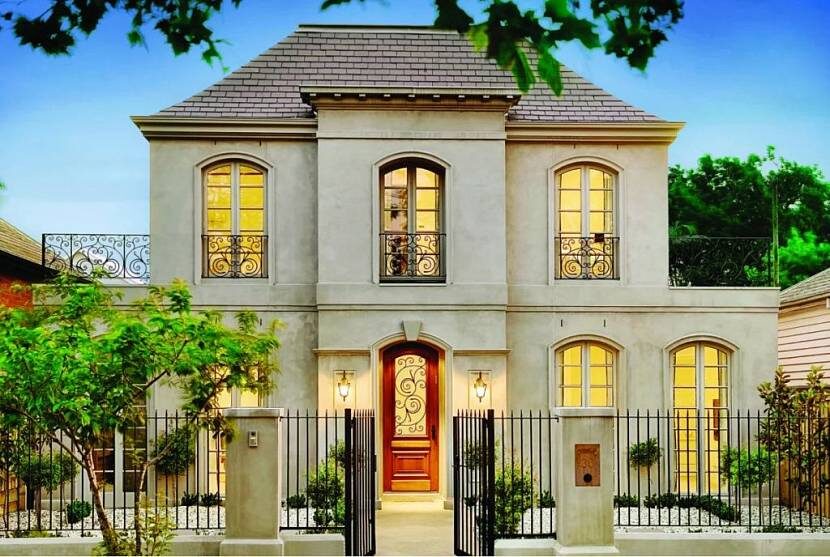
- Roof. Usually simple with small eaves and small dormer windows; a cozy attic can often be found beneath it. The classic roofing material is colorful tiles.
- Windows. To correspond with the style, windows are made small and decorated with shutters (or their imitation). Modern trends, such as neo-Provence, allow for the use of panoramic windows or floor-to-ceiling window openings.
- Front door. Solid, decorated with wrought iron fragments; a peephole is an essential addition. In modern cottages, options with glass and stained glass inserts are popular.
- Wall finishing. Plaster of delicate shades (beige, coffee, lilac, milky) is chosen for it. Walls are also covered with wooden paneling or faced with natural (slate, limestone, sandstone) or artificial stone.
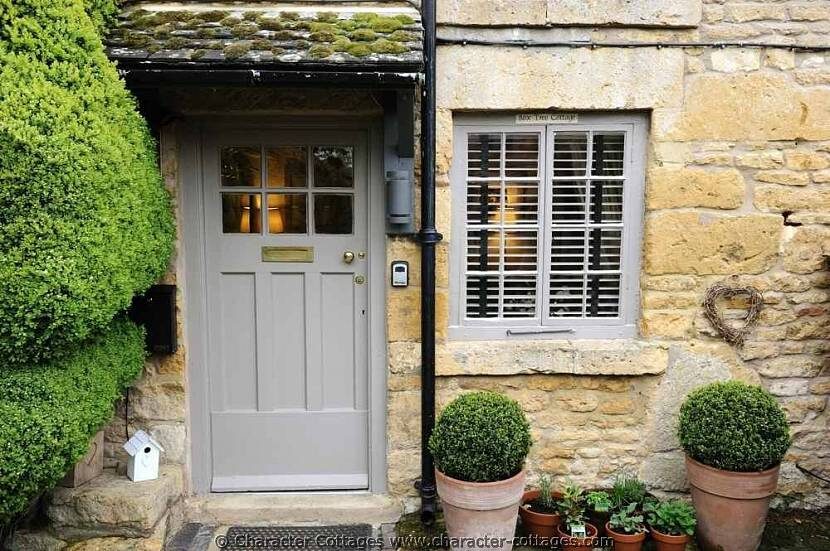
Chateau
Originally, chateaus were country estates of French aristocratic families. Today, they remain the most impressive (and expensive) embodiment of the rural style. The building can hardly be called a country house, as it combines the features of provincial housing and castle architecture. The chateau can be described in the following details:
- Large building area, surrounded by a large well-groomed garden.
- Facade. A complex and majestic combination of arches, balconies, bay windows, columns and projections. The exterior is decorated with decorative stucco and stone, and there are reliefs and medallions. French windows (from floor to ceiling) serve as decoration of the facade.
- Main entrance. Usually decorated with a high niche, often with columns; a wide staircase leads to the doors. In front of the main entrance, a ceremonial flower bed is designed.
- Roof. Multi-sloped, covered with tiles; it is complicated by chimney pipes, a spacious mansard with lancet windows, towers and spiers.
- Basement. Not visible from the outside, as it is not emphasized by facing.
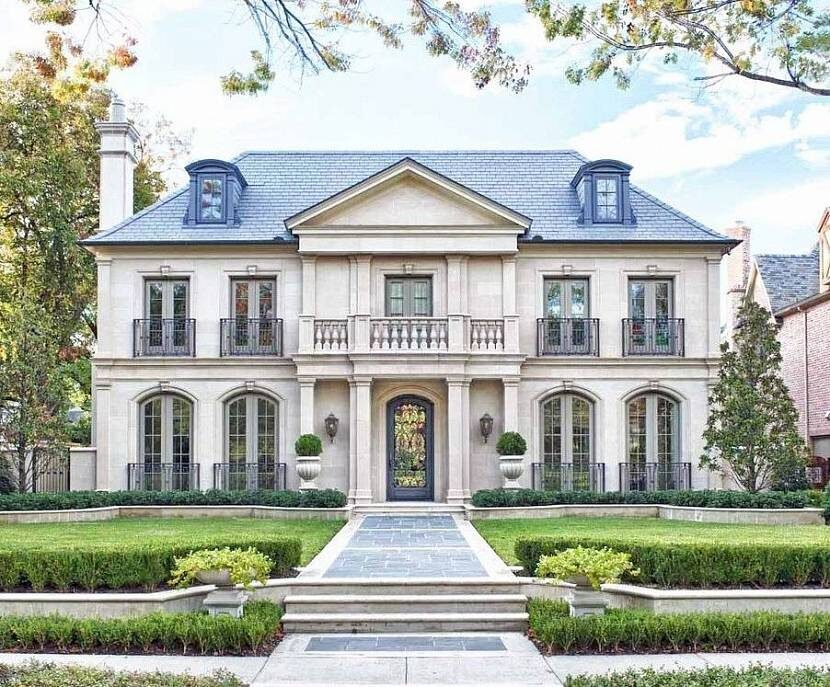
Normandy-style House
The influence for this architectural style came from buildings in the northwest of France, which in turn borrowed from Scandinavian countries. This explains the strictness of the architecture and the focus on Gothic elements. Normandy-style remains very popular in modern country house construction, and a Provence-style cottage with Normandy touches has the following features:
- Buildings are often constructed using half-timbered techniques, with walls decorated with vertical and cross-shaped wooden posts. In modern interpretation, polyurethane beams with imitation of aged wood are also used. A characteristic architectural element of the Normandy house is the balustrades that surround the stairs, balconies, or terraces.
- Color palette. It is diverse; natural shades of sand, gray, and brown are popular. They are diluted with pink, purple, and ochre colors.
- Windows and doors. Half-circular arched windows are characteristic of this style of housing. Doors are preferably massive, preceded by a porch decorated with wrought iron railings.
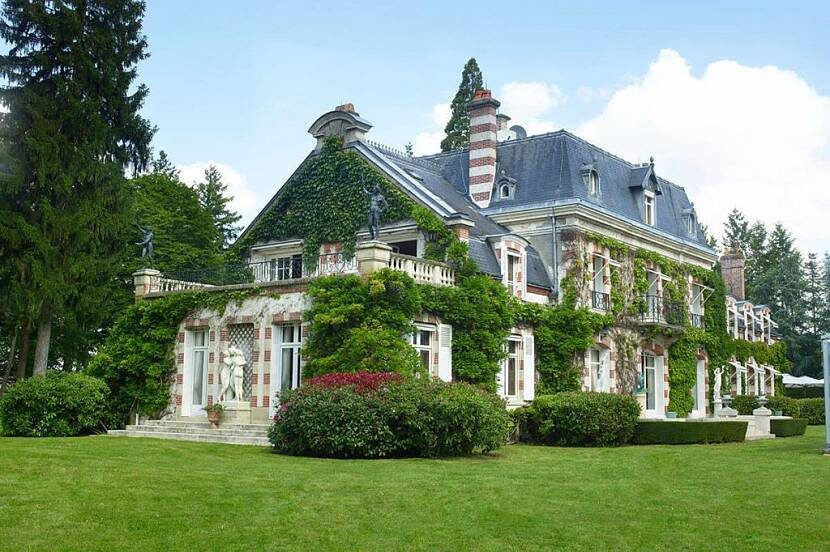
- Classic Norman buildings are decorated with geometric or floral ornamentation on the facade, finished with rustic stone. In modern interpretation, the facade bases are protected by rustic panels, and the facade is laid with decorative brick or fireclay ceramics.
- The roof is crowned with a hipped roof with wide pediments, conical turrets, and wrought iron elements, paying homage to the Gothic past.
Modern Provence: adaptation to modern conditions
The style, which has been around for centuries, is easily adaptable to modern realities (perhaps this is part of its worldwide popularity). While the classic version may require the use of only natural materials (which not every budget can withstand), modern Provence is ready for compromise. In this case, the spirit of elegance and simplicity is preserved thanks to attention to detail and the use of modern materials.

When designing a house in the Provencal style, the following techniques and recommendations are often used:
- Facade finishing. Natural stone finishing can be replaced with artificial stone. Rustic stone (expensive and heavy on load-bearing walls) can be substituted with artificial stone made of architectural concrete or polyurethane.
- Decorative facade elements are minimized, with emphasis placed on doors and windows. Wooden details should not look freshly painted; they should be artificially aged to achieve a weathered and cracked surface.
- Stone finishing can be replaced with plastering, with natural weathering being key. Another option is an unfinished surface with visible seams and whitewashing.
- Expensive wooden windows can be replaced with modern double-glazed windows that are stylized to look like wood. If desired, decorative wrought iron details can be added to the entrance door and porch.
- Ceramic tiles can be replaced with suitable materials such as cement-sand, bituminous, or metal tiles.
Interior: finishing work
The interior of a French country-style home exudes a relaxing atmosphere. The key idea of the design is simplicity, with a connection to nature. Therefore, the interior design is based on natural materials (and here Provence intersects with the techniques of eco-design). The following techniques and finishing methods can help achieve an impressive antique look on the walls:
- Choose rough-textured plaster with a large or medium grain size. It should be applied unevenly, so that the brickwork is visible through the finishing layer. For painting, it is better to use the colors of natural stone, such as gray or beige.
- Painting the walls. Choose matte water-based paints in muted, faded colors such as beige, olive, blue, gray, lavender, and ochre. Apply the paint unevenly, as if haphazardly, and combine several similar shades.
- Whitewashing. It can be applied in different ways, on plain or textured plaster.
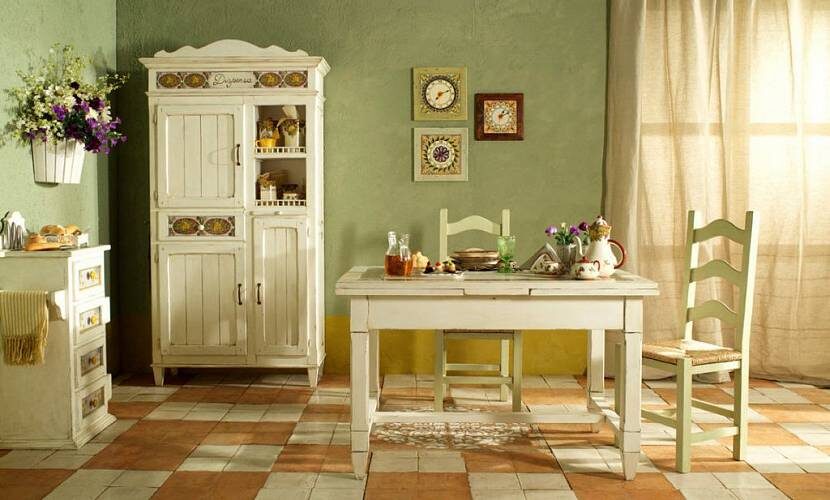
- Brick and stone finishing. These materials can be used to cover all walls or just one accent wall. Natural stone masonry can be effectively replaced with artificial panels that accurately imitate the texture and color of their natural counterpart.
- Tile. Suitable for finishing all rooms, from living rooms and bedrooms to kitchens and bathrooms. A popular option is white tiles with small plant ornament.
- Wood paneling. In other styles, natural wood surfaces retain their natural color. In a Provence-style interior, wood is painted in light shades, which is especially suitable for decorating the hallway and living room. Walls are often decorated with plastic wall panels with a wooden texture; they are easy to care for, affordable, and resistant to moisture.
The following design techniques can help support the style:
- Ceiling. It’s best to paint it white. In another option, ceiling beams (or their imitation) are left visible; forget about stretch ceilings.
- Window frames and doors. Wooden windows and doors painted in pastel shades with an aging effect look great. You can make the door the centerpiece of the decor by painting it lavender, coffee, or turquoise.
- Flooring. The characteristic Provence-style flooring is wooden planks (painted or untreated). The floor can also be finished with laminate or parquet; in all cases, the coating should look well-worn as if it has been used for a long time. Matte tile is the best option for the kitchen and bathroom; it can be uniform or patterned, with a small plant or geometric pattern.
Interior: Decor Accents
Knowing the features of three directions – classic, Norman, and chateau – will help you choose furniture that suits the Provence-style interior in a wooden house. For the first two, it is preferable to choose light-colored wooden furniture, as well as wicker furniture and items with forged decorative details (for example, a bed or an etagere). Despite their rural origin, furniture items are characterized by elegance (which cannot be said about other types of country furniture): a buffet can be decorated with carving, and a wardrobe can have intricate painting.
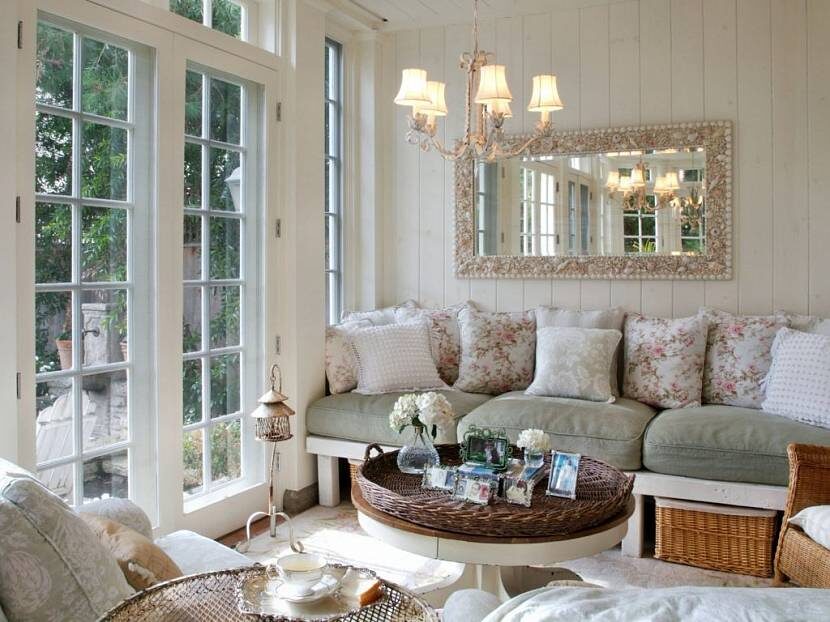
To maintain the chateau style, you will need more elaborate furniture with the following characteristic features:
- Exquisite upholstered chairs with armrests, tables, sofas, and armchairs with curved legs. These items are decorated with carvings, and high-quality fabrics with a characteristic floral pattern are used for upholstery.
- Case furniture takes on a more ornate look. Chests of drawers, wardrobes, and buffets are inlaid and adorned with pilasters and carved cornices. A mix of items with different surface finishes always looks original.
- Small furniture items (etagères, dressing tables, small sofas) are often decorated with wrought iron elements and noble patina.
- Small furniture items. To complete the look of the house, details are needed: mirrors in openwork frames, elegant coat racks, and functional umbrella stands.
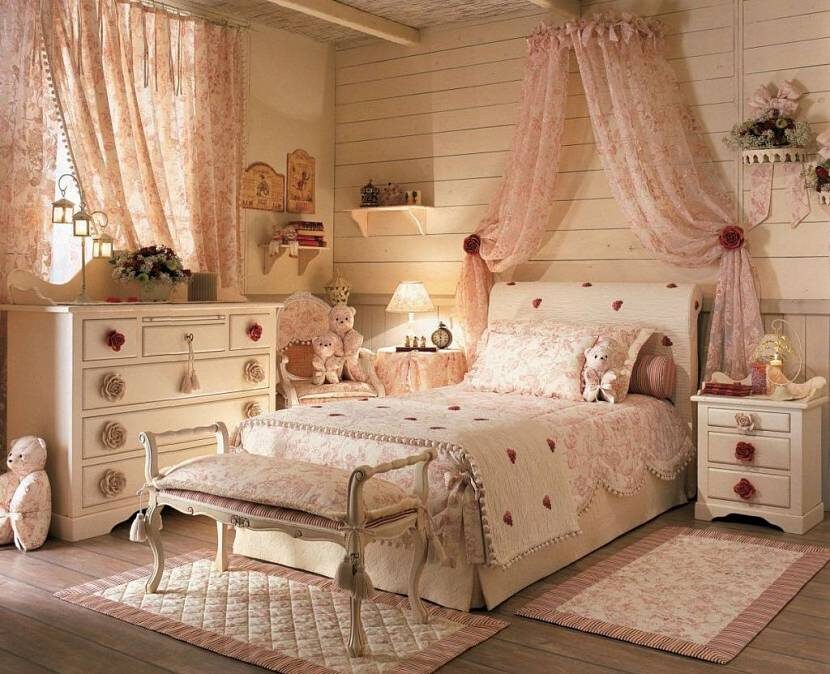
Interior design in the Provence style is not only based on color and the use of natural materials. A great deal of importance is given to the selection of accessories; the right decor will help enliven the romantic French style. The following items are used for interior decoration:
- Textiles. To make the bedroom or living room look cozy, you will need to take care of tablecloths, sofa cushions, napkins, bedspreads, blankets, and curtains. Don’t be afraid to overdo it with lace and floral patterns – it will be beneficial for the style.

- Small decor. In a Provence-style kitchen, there is a place for various ceramic and porcelain pots, kettles, and soup tureens. Vases, figurines, boxes, dried and live flowers will decorate the living room and hallway. You cannot do without photographs and paintings in simple (or, on the contrary, openwork) frames.
- Lighting. Floral motifs are not only found in finishes and textiles but also on lampshades. To complement the interior harmoniously, you will need simple and elegant chandeliers, lamps, floor lamps, and wall sconces.
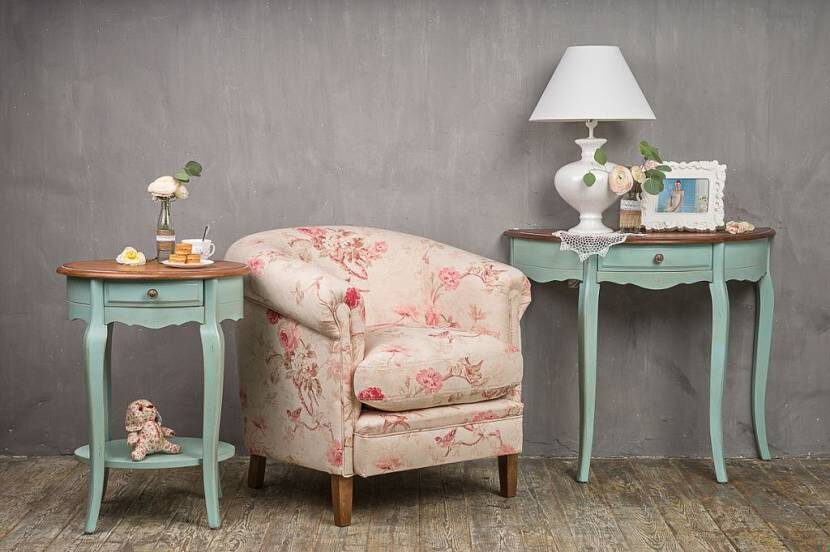
Landscape design in the Provence style: decoration ideas
To enhance the impression, for a country house in the French provincial style, a landscape project of one of two types is chosen:
- Classic. The geometric (regular) style includes a clear layout of the garden and a neat appearance of all greenery.
- Rural. A less formal style with lush fruit trees, overgrown flower beds, and winding paths.
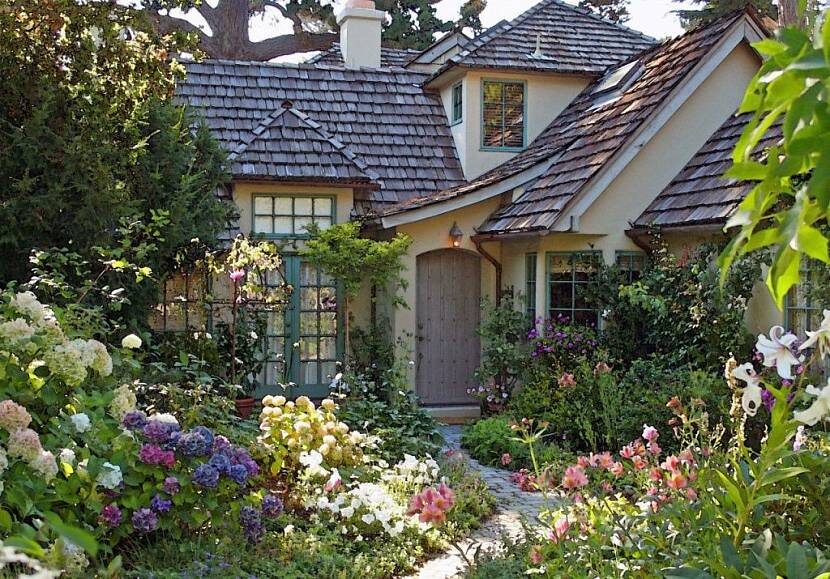
If you want the surrounding area of the house to match its interior, you should follow the following decoration recipes:
- The image of the French countryside can be easily emphasized with small architectural forms – gazebos, terraces, arches, and fountains.
- Relaxing in the garden will be more comfortable if you take care of garden furniture and outdoor lighting.
- Flower beds and gardens planted with bright flowers, as well as garden sculptures and flowers in pots arranged on the terrace and walls of the house, will be a decoration for the garden.
- The feeling of coziness will be supported by a gazebo and a fence covered with climbing plants, lilac bushes, surrounding the recreation area.
- The suburban area in the Provence style is characterized by wooden fences and paths paved with natural stone.
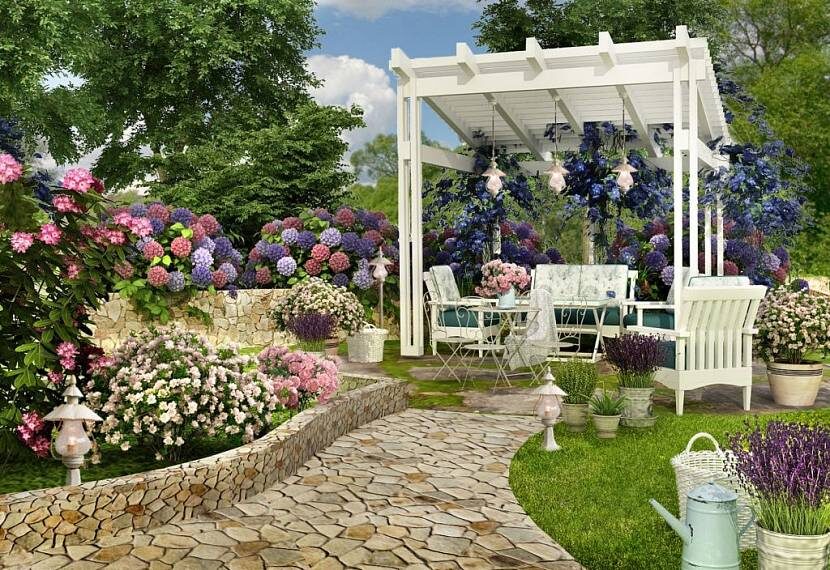
In Conclusion
The Provence style is steeped in traditions; it does not tolerate modern gloss, screaming colors, and brand new items straight from the store. It is chosen by those who value naturalness and simplicity in everyday life. For assistance in designing the exterior and interior, you can turn to specialized companies whose employees are always up-to-date with the latest design ideas. They will help give your home and plot the charm of the French province.

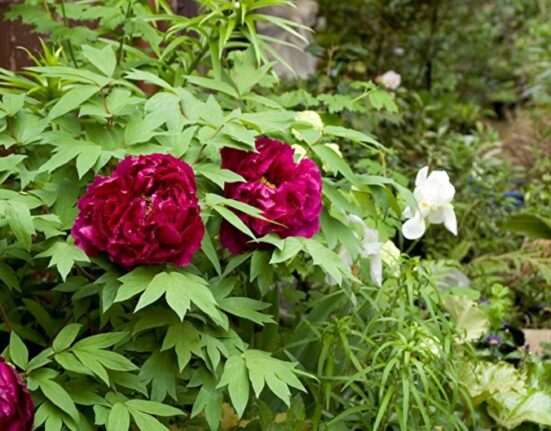
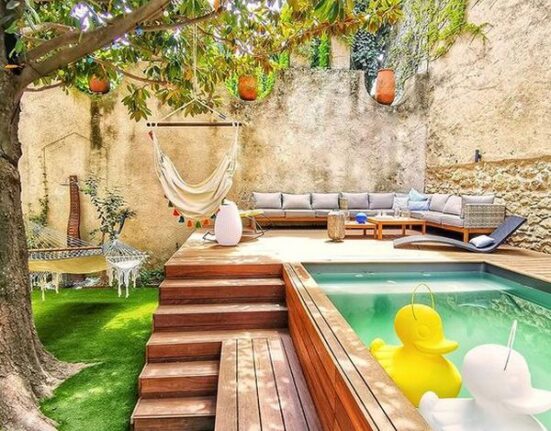
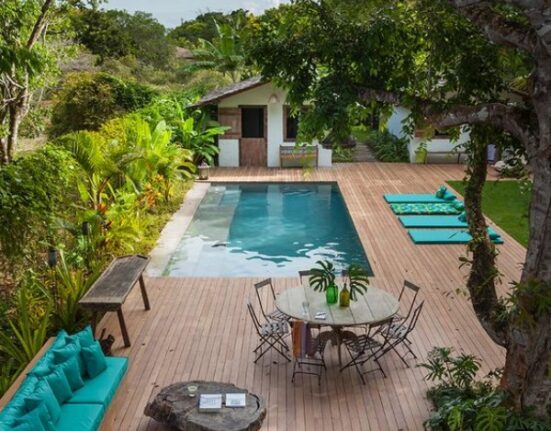
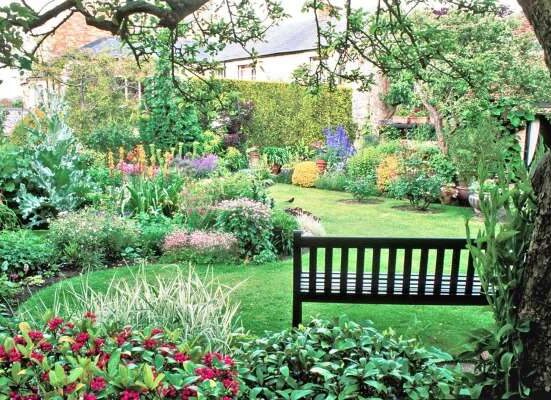

Leave feedback about this